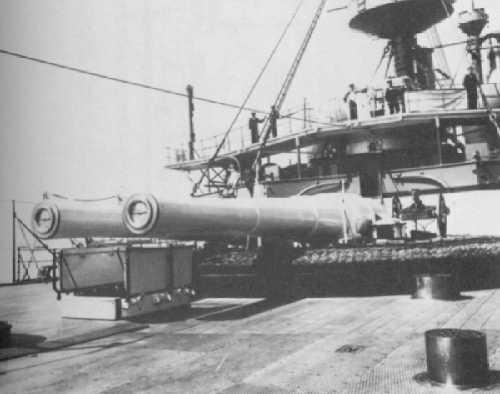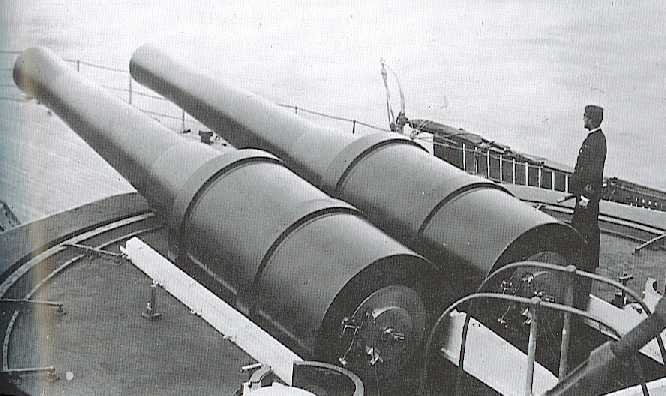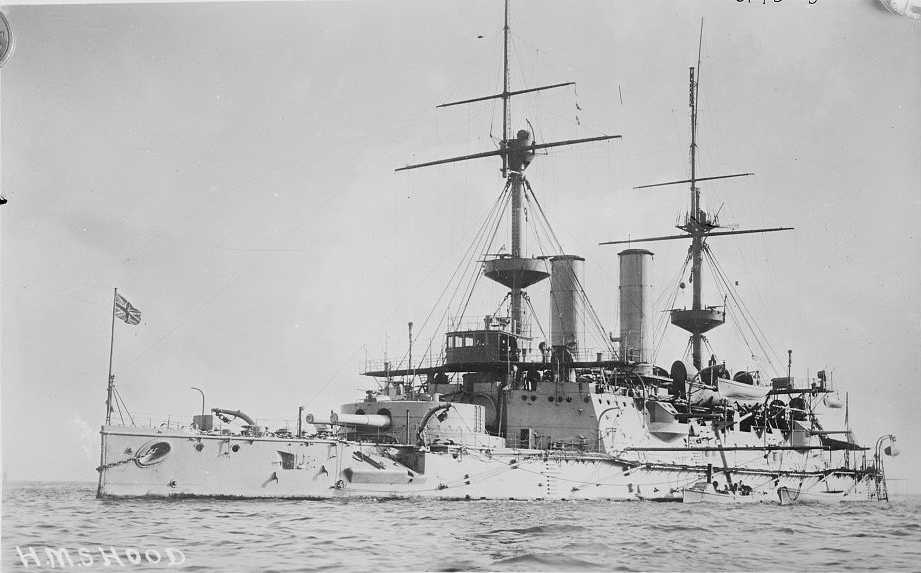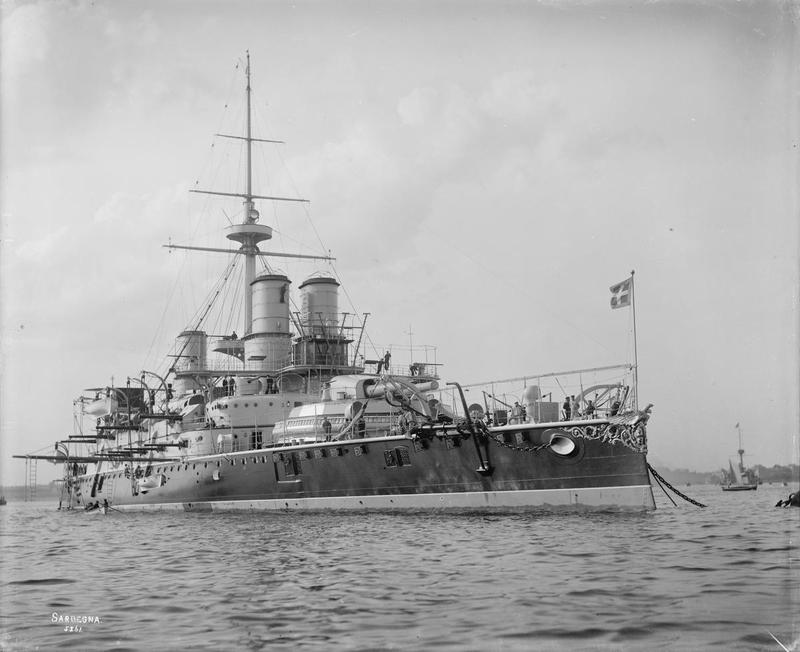|
One gun was modified by adding a trunnion bend and then installed in a disappearing mount at the Plymouth defenses around 1900. During World War I, when the stocks of old 13.5" (34.3 cm) shells ran out, Revenge (later known as Redoubtable) had four of her guns relined down to 10" (25.4 cm), which were then designated as 10"/40 (25.4 cm) Mark VIII. Later, another four of her guns were lined down to 12" (30.5 cm) and these had a performance similar to that of the 12"/35 (30.5 cm) Mark VIII, but these do not appear to have ever been redesignated. Construction was gradually improved as the series went on, with a reduction in the number of components. Where the Mark I consisted of half liner/A tube/breech piece, B tube, four B hoops to muzzle/five C hoops/three D hoops; the Mark IV was constructed of A tube/breech piece, B hoop, B tube to muzzle, two C hoops with C tube between/two D hoops/jacket. For the Mark I, the breech mechanism screwed into the breech piece while for the Mark IV the block was taken by a breech bush which screwed into the breech piece and the first C hoop. All marks were interchangeable and all used an early interrupted screw type breech block for which there was no carrier, the hydraulically operated block being completely detached from the gun at the fixed loading station. An asterisk after the mark number originally indicated a planned alteration of the front slope of the chamber to prevent slip-back at high elevations for guns modified for coastal and railway batteries, but no guns were ever so altered. The gun modified for the disappearing mounting in the Plymouth defenses was designated as the Mark IIIf*. In total, 4 Mark I, 13 Mark II, 54 Mark III and 5 Mark IV guns were manufactured. Italy purchased at least twelve 13.5"/30 (34.3 cm) guns ca. 1890 for arming the Umberto class, although these may have been to a similar but different design. |

After guns on HMS Royal Sovereign
|

13.5" (34.3 cm) guns on a Royal Sovereign
Battleship
|

HMS Hood, a Royal Sovereign class pre-dreadnought,
about 1900
|

Italian Sardegna
|